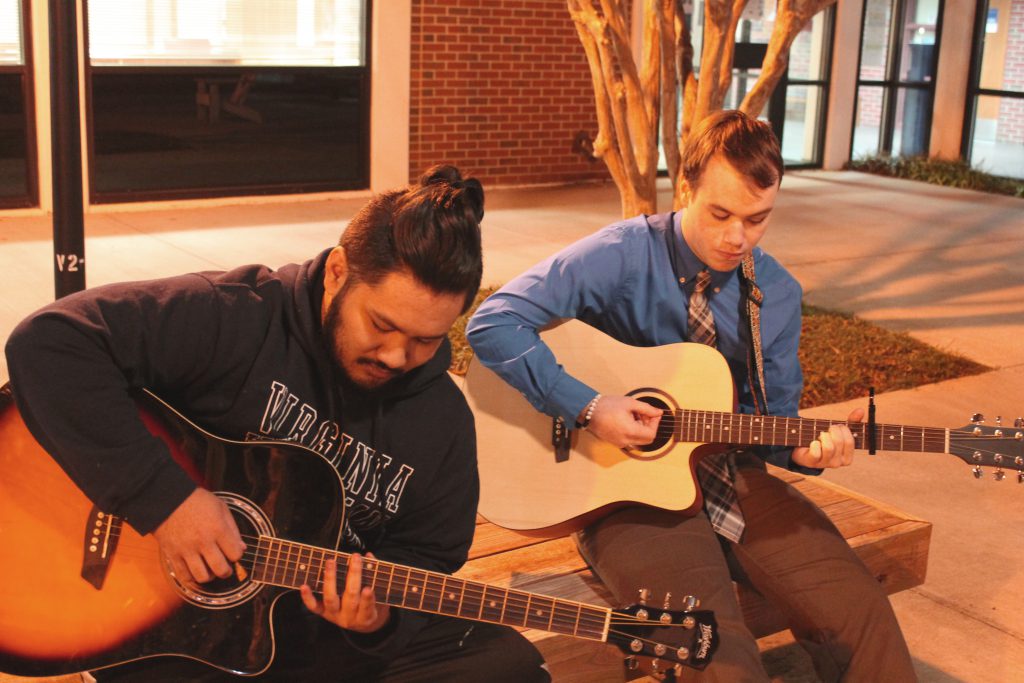 TIM PEPPER
TIM PEPPER
Arts & Entertainment Editor
In the past few weeks, many students have reported slower than usual Internet speeds and believe it or not, Netflix may be killing your Internet.
Netflix, is a massive online movie and television show streaming service in which subscribers pay a monthly fee to either have a seemingly endless list of movies sent to your home address or streamed directly to your tablet, smart phone or computer. This service has become increasingly popular over the last few years and is used by approximately 71% of students on campus, according to a non-scientific survey.
To put this into perspective, based on a 2013 study done by the Sandvine Networking Equipment Company, Netflix has taken up more downstream bandwidth than any other website in the world at 32% of the overall global bandwidth, followed by a very large gap by YouTube at 17.11%. These numbers are astounding and are reflected on the VWC campus network.
After several consultations with the computer services help desk and a meeting with Mr. Jack Dmoch, the Chief Technology Officer at Virginia Wesleyan College, some interesting points were uncovered.
“11:30 a.m. to 1:30 p.m. and 11 p.m. to 2:30 a.m. seem to be the peak usage times,” says Dmoch.
Fortunately for those readers who are avid Netflix addicts, there are some ways to jack up network speeds without abstaining from your favorite streaming service. Small actions such as turning off the wireless Internet connection (Wi-Fi) on your phone or tablet until you absolutely need it could help significantly if everyone could get on board.
The way the campus network works is not very complicated, but to put it simply, there are two ways to connect to the internet. Students can connect either by using the Ethernet ports in their rooms or by connecting wirelessly to access points placed strategically around campus.
The Ethernet option is actually a very good one as connecting to the network this way gives you a pretty significant dedicated connection straight to the main switch. This means that students are not competing directly with anyone else for the bandwidth provided on the campus network. This method is significantly faster than Wi-Fi in almost every circumstance.
Connecting by Wi-Fi is a little more complicated. By connecting to Wi-Fi, students are essentially battling with each other for priority on the access points in their dorms and throughout campus. While the quality of your device can affect the speed of your connection, the number of devices attempting to connect to the access point at one time has a much more noticeable impact.
“The more users [attempting to connect], the slower [connection] for everyone on that [access point],” says Dmoch. “Not having Wi-Fi enabled on smart devices unless they are actually in use will reduce the number of devices attaching to a particular [access point]. Smart Phones, tablets, televisions, gaming devices, DVD players, and laptop computers that are turned on will try to connect to any [access point] if the Wi-Fi is enabled on the device.”
Dmoch also looks forward to providing more long-term solutions to users of the VWC campus network. New access points are being installed in areas of concern, while higher power access points are being installed in heavy traffic areas such as the convocation center. These access points unfortunately cost nearly $1,000 a piece and, therefore, cannot be purchased until there is space for them in the budget.
“We are constantly looking for issues with our network and are deploying new network switches and APs as resources allow,” says Dmoch. “We are also looking at a new product to manage our network traffic and we should procure and deploy this during the summer. This will enable us to make better use of the capacity we have and expand as needed.”
Despite these possible upgrades and fixes, it is important to understand that the students are by far the heaviest users of the Internet and bandwidth on campus, and because of this they can also determine how fast it goes. Be conscious of how many devices are connected to the network and understand that streaming sites like Netflix have been and will continue to bog down the network if students are not considerate of these issues. Don’t leave your computer or other Wi-Fi devices on if they are not in use, because even something as small as this could cause an online assignment to be late if your Internet is running slow.


